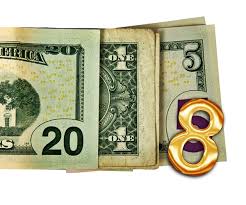Central banks, trade and bubbles threaten the 2018 status quo

After a year of relatively healthy global economic growth, economists are predicting pretty much the same for 2018 a neither too-hot nor too-cold Goldilocks scenario, but with little sight of the three bears.
The idea is that all is pretty much on track for growth that will be stronger than in 2017.
Part of this may come from the fact that forecasters generally got it wrong last year, underclubbing this year’s economic performance, particularly for the euro zone and Japan.
The International Monetary Fund, for example, saw 2017 global growth at 3.4 percent with advanced economies advancing 1.8 percent. It now reckons them at 3.6 percent and 2.2 percent.
It had the euro zone and Japan growing 1.5 percent and 0.6 percent, respectively. It now has them at 2.1 percent and 1.5 percent.
“Faster growth is reaching roughly two-thirds of the world’s population,” the IMF said in a December blog post.
This performance has made some economists optimistic. Nomura is among the more bullish: “Global growth has far more self-reinforcing characteristics at present than at any time over the last 20-30 years.”
But Goldilock’s bears do have a habit of showing up. There are huge numbers of potential political and economic risks to the status quo. But as in the fairy tale, let’s go with just three: central banks, trade, and bubbles.
In the first case, the danger is that there will be a policy mistake, squeezing debtors. The second relates to renewed U.S. protectionism or anger over Chinese exports triggering tit-for-tat, growth-stifling trade barriers.
The third is about sudden market losses that dry up spending and demand.
BEAR ONE IN THE WOODS
Part of 2017’s global economic success was put down to a combination of extraordinarily loose monetary policy and competent management by central banks of their attempts to wean the world off such largesse.
Entering 2018 the U.S. Federal Reserve is lining up for three more hikes, the European Central Bank is slowly cutting back on its asset purchases, and China is increasing rates.
All of this is being carefully flagged by the policymakers, but mistakes can happen and any significant shift of gear could cause a sharp retrenchment in consumer and corporate spending.
The amount of U.S. corporate debt outstanding, for example, is nearly $ 8.8 trillion, according to Sifma, the U.S. securities industry group. That is up 35 percent since 2010 and a major driver behind corporate expansion.
“Financial stability risks pose a bigger threat to the continuation of the (growth) cycle than price stability risks,” Morgan Stanley co-head of economics Chetan Ahya wrote in a 2018 outlook, saying U.S. corporates were the most exposed to higher interest rates.
This implies that central bank tightening to curb overly robust growth or inflation risks creating a credit squeeze — hence the caution in Washington, Frankfurt, Beijing and Tokyo.
BEAR TWO IN THE WOODS
U.S. President Donald Trump’s 2016 election campaign was peppered with “America First” rhetoric and a dollop of belligerence about other countries.
In office, the Trump administration has done a few things in the name of U.S. interests to upset multilateralists.
It has, for example, launched an investigation into steel imports, blocked the appointment of judges at the World Trade Organization, and withdrawn the United States from a now 11- member Pacific Rim trade pact.
Other measures have not progressed as far, notably the threat to withdraw from the North American Free Trade Agreement, and the pledge to bring China to heel over its allegedly unfair trade practices.
But the U.S. trade deficit increased to $ 43.5 billion despite growth-driven U.S. exports. The U.S.-China deficit dropped a bit but was still $ 34.6 billion in Beijing’s favor.
“The massive TRADE deficits must go down quickly,” Trump tweeted after a trip to Asia in November.
Were rhetoric to turn to practice, the economic climate of 2018 could quickly turn chilly.
According to the U.S. Conference board, China’s economic exposure to the United States is nearly five times higher than the U.S. exposure to China. That would suggest that any impositions of trade barriers could hit growth in China that is behind much of the wealth in exporting nations like Germany.
It is far from just a U.S.-China matter: the World Bank estimates world trade accounts for 52 percent of world GDP, more than doubling its clout over the past 50 years ago.
BEAR THREE IN THE WOODS
Bubbles are hard to gauge until they have popped (there is a tendency to say “this time it is different”, until it isn‘t).
But if economists have learnt one thing from this century’s financial market crashes it is that they bring the house down with them.
The World Bank estimates that the global growth rate fell from around 4.4 percent in 2000 to some 1.9 percent in 2001, when the dot com bubble burst, and that the financial crisis prompted a plunge from a roughly 4.3 percent growth rate in 2007 to a 1.7 percent contraction in 2009.
What happens is that sudden losses in financial instruments cause companies and consumers to stop spending, leading to tumbling growth, layoffs, and debt defaults.
There are plenty of examples of assets that have soared continually and steeply in the past year: Bitcoin’s staggering rise is but the most obvious.
Albert Edwards, a Societe Generale strategist who is always on the lookout for bubble-poppers, reckons that with stock markets in the stratosphere, it won’t take much to reverse things.
It may be just some as “boring” as some unexpectedly poor profits, he suggests.
